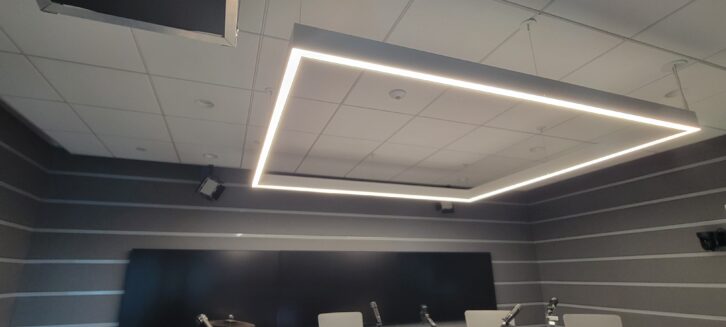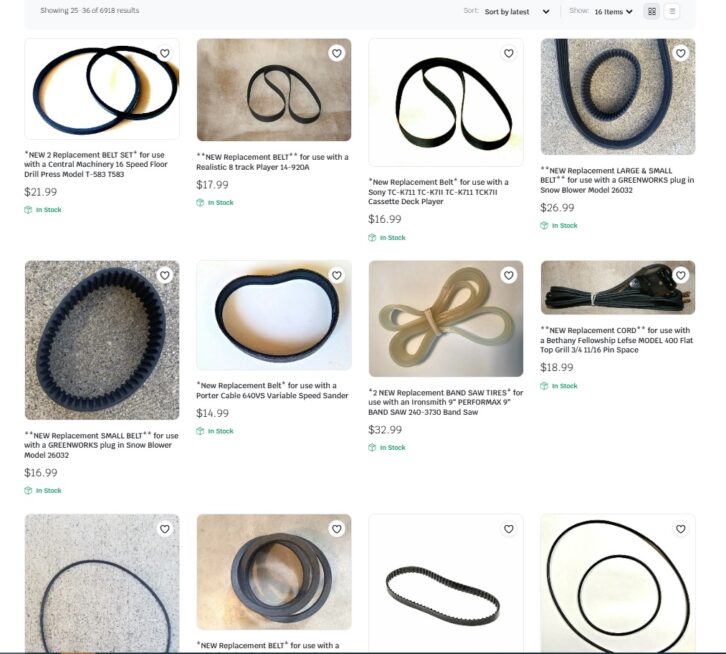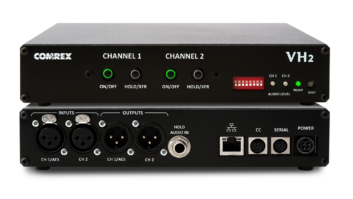Readers have commented that many stations seem to be upgrading or freshening their studios in the waning days of 2024. For many, this means clearing out everything, including old ceiling fluorescent or track lighting.
General contractors are specifying modern-looking LED arrays that are low in profile yet brighten a studio. Two such examples are seen here. The first photo is from WOW Radio in Connecticut, the second is at iHeart studios in Miami. An LED array bathes the studio in light, which is pleasing and also useful for visual radio applications.


If you haven’t made the conversion in your studios, consider it. Even converting to LED incandescent replacement bulbs will amaze you and save you money in electric costs. The bulbs also reduce the amount of fixture heat. If you’ve made the switch, send me an email to tell me about it, and include a picture.
Frank’s Ticking Stick
Consultant Frank Hertel, principal at Newman-Kees RF Measurement & Engineering, writes that broadcast engineers often are required to “fit” material into odd-shaped spaces, as when installing tile or carpet in the studio or filling an odd-shaped hole with ceiling tile.
Rather than “estimate” your cut, visit YouTube to learn how to use a Ticking Stick to improve accuracy.
This old carpenter’s trick apparently originated with shipbuilders, who had to deal with many unusual angles. You don’t buy a Ticking Stick, you make one. Search YouTube for “Ticking Stick” or “Tick Stick” to find videos about how this tool can be adapted for replacing an odd-shaped piece of tile, soundproofing foam or carpet. (The YouTube channel called See Jane Drill has one, for example.)
Frank also shared a useful site for engineers restoring old cassette or reel-to-reel machines that need new drive belts.
Recently, he was repairing a Tascam 22-2 two-track stereo machine. When he got it open, he found that the drive belt had turned to a black rubbery goo. Frank warns that if you encounter this, make sure you wear rubber gloves because the gunky paste will stain your hands. Isopropyl alcohol is the best solvent for cleaning up such messes.
For the replacement drive belts, try www.westcoastbelts.com. The company has thousands of belts in stock from $14 to $30. A small price to pay to restore a machine. They even have a 30-day return policy.

Perusing the list, we find belts for many types of equipment — including a Magnavox 8-track tape player as well as various brands of meat slicers! The company can also manufacture custom belts if needed.
This is a good site to bookmark if you maintain legacy consumer or broadcast devices that use drive belts.
Worldwide resource
Broadcast equipment distributor Broadcast Supply Worldwide has released its annual equipment catalog. It describes pretty much everything used in a radio or television broadcast facility and is available at no charge. Request your copy by sending an email with your station information and mailing address to sales@bswusa.com. Please let them know you heard about the catalog from Radio World’s Workbench.
Wireless mic for your phone
Frequent Radio World contributor Dan Slentz points out that although cameras in most smartphones are amazing, their built-in microphones often are not.
Røde has introduced the Wireless Micro to help. You simply clip the mic onto your lapel and insert the Micro receiver into your phone. The system consists of two mic transmitters and a dual receiver, so you can record two people at one time — great for interviews.
There are two versions, one with a Lightning connector for earlier iPhones, and a USB-C version for newer iPhones and Android devices. A Gain Assist feature keeps levels in check, and it comes with a built-in windscreen.
The transmitters will run for seven hours on a charge; that’s a lot of recording for under $150.
They’re available from Røde dealers.
Specialty tool

The StandWrench from Lectrosonics is a multi-tool for the performance industry. It can tighten loose music or copy stands, and the variety of wrench opening sizes make it useful for light-duty tightening. The tool is laser-cut from 14-gauge stainless steel, with a nearly flat profile. It has six hex sockets and a large flat-blade screwdriver tip. Its compact size makes it suitable for any toolbox.
Send your tips! Workbench submissions are encouraged and qualify for SBE recertification credit. Email johnpbisset@gmail.com.







